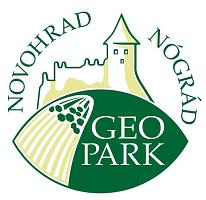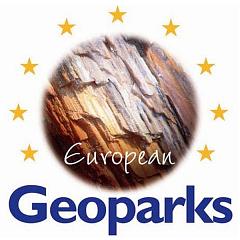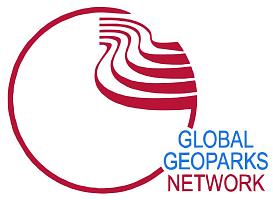WHAT'S NEW
The special photo exhibition of Mr. Laszlo Alapfy can be seen in the Ancient Pine Visitor Centre between March 1. 2011 and April 30.
There are some unclassified trace fossils on the surface of the footprint-sandstone in the Tasnádi Kubacska Hall of the Geological Study Trail. Some of them are footprints of prehistoric animals (see the pictures below). We would appreciate your input or comments on them by email. Let's discover our past together.
Novohrad - Nógrád Geopark
Ancient worlds without borders
The 1. 587 km2 (with later extension 1.619 km2) large territory of our Globe's first transborder Geopark is a part of the Pannonian basin situated in Central Europe. The area spans from the southern edge of the Western Carpathians to the North Hungarian Mountains. It is landlocked and dominated by hills, divided by valleys and basins. Approximately 150 thousand people live within the Geopark.

It comprises the administrative area of 64 settlements in Hungary (including urban county Salgótarján) and 28 settlements in Slovakia. The Southern part of the Geopark can be reached by car in an hour from the Hungarian capital Budapest. Lučenec is the biggest Slovak city close to the Geopark.
Being a transnational Geopark, the name comes from the Slovak and Hungarian names of the County, where the Geopark is located.
 |
 |
 |
The emblem of the Geopark depicts the Somoska/Somoskő Castle. At the very foot of the castle marked the border line between Slovakia and Hungary after the First World War, separating communities from each other and artificially the landscape for 85 years. The castle stands on a basalt outcrop which represents beautifully the human interaction with the geological past.
The geological heritage of the Novohrad - Nógrád Geopark has a special significance. The area’s stratigraphy represents deposition over the last 30 million years commencing with the initial opening of the Pannonian basin. The geology of the region is the product of a series dynamic of Earth processes. These processes include the collision of accreted terrains resulted in highly complex volcanism spanning 20 million years, the destruction and reactivation of marine basins, burial and the conservation of palaeohabitats.
The outstanding geological heritage of the region is a treasure to both the inhabitants and visitors. It’s value was recognised even by earth scientists who started to reveal it’s secrets three centuries ago, when the geological research first began in the area.
The geopark project started in 2005 and the database of the area was accomplished on both sides by the end of 2007. The headquarters of the Slovakian part was established in Filakovo in early 2008.
In January 2009 the Novohrad-Nógrád Geopark applied for the European Geoparks Network membership and got the title in 2010. It became the member of the Global Geoparks Network as the globe's first transborder geopark!This grassroots movement, inspired by enthusiastic locals, has been building on the rich geological, natural and cultural heritage of the area.
By linking these attractions in an effective network, harmonious living can be achieved. The Novohrad – Nógrád Geopark reunites people and landscape again.
Short description of the Geopark









